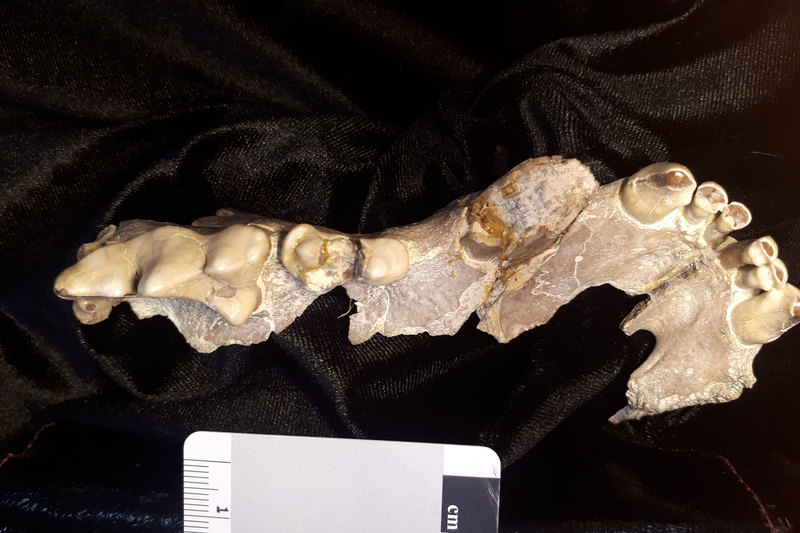Sabre-tooth cat named after renowned UCT scientist
14 November 2023 | Story Elsabé Brits. Photo Supplied. Read time 3 min.
After more than 30 years in the field, renowned paleobiologist, writer and professor at the University of Cape Town (UCT) Anusuya Chinsamy-Turan now has a sabre-tooth cat species – Lokotunjailurus chinsamyae – named after her.
L. chinsamyae was one of two new species found in the West Coast Fossil Park in Langebaanweg in South Africa. The genus Lokotunjailurus means ‘cat’ in the language of the indigenous people of the Turkana area of Kenya where its fossilised remains were first discovered.
Th L. chinsamyae fossils are the most complete remains of the skull and upper teeth found for the Lokotunjailurus genus. The extinct cat would have had long limbs and was adapted to live in open grasslands.
Chinsamy-Turan, who is based at the Department of Biological Sciences, University of Cape Town, South Africa said: “I am deeply honoured and delighted by the recognition. I have worked on Langebaanweg fauna with students for over two decades. Our work has allowed us to decipher so much about the biology of the animals that lived here on the west coast of South Africa about five to seven million years ago,” she said.
Alberto Valenciano, researcher at the Complutense University of Madrid and co-author of the article in iScience about the finds said: “The diversity of sabre-tooth cats at Langebaanweg is high because there were distinct habitats, such as riverine forest, open areas and even tidal zones.”
“We have described two new species of sabre-tooth cat – Lokotunjailurus chimsamyae and Dinofelis werdelini – and we have changed the genera of the two previously known sabre-tooths: Yoshi obscura, formerly Metailurus obscurus and Adeilosmilus kabir, formerly Amphimachairous species,” he said.
Due to its large size and skeletal adaptations, L. chimsamyae may have hunted animals such as horses; large bovids such as buffalo, nyalas and bontebok; pig-like creatures; and large land birds, such as ostriches. It may have even preyed on penguins and seals.
This genus has been found before in Kenya and Chad, but this is the first time that it has been identified in South Africa. This suggests that it lived over wide distances in Africa, said Chinsamy-Turan.










